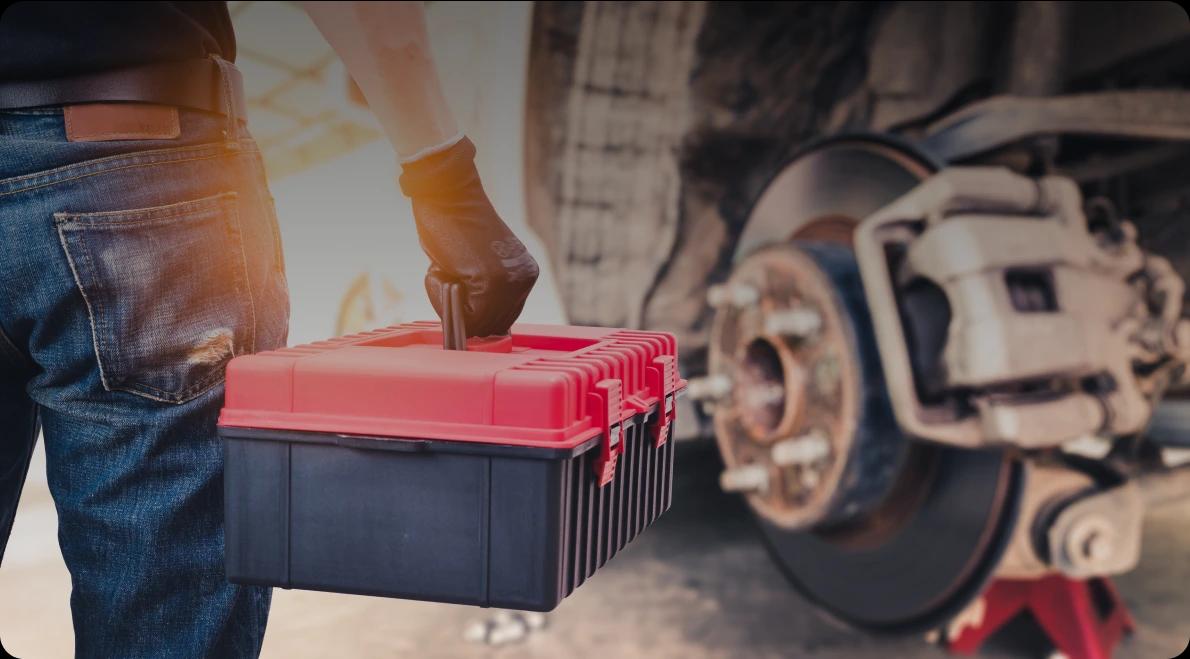DVIR: Daily Vehicle Inspection Report
DVIR meaning: what is it?

The DVIR meaning refers to a systematic report that truck drivers complete daily to assess the condition of their vehicles. It serves as a comprehensive checklist that identifies any potential issues before the vehicle is put on the road. The DVIR is not just a regulatory requirement; it is a vital tool for ensuring the safety of drivers, cargo, and other road users. Regular inspections help prevent accidents and breakdowns, ultimately saving time and money for trucking companies.
What Does DVIR Stand For?

DVIR Requirements
Inspection items
Signature and record-keeping
Reporting defects
Driver training
What Is DVIR in Trucking?

When Are You Required to Complete and Sign a DVIR?

Benefits
record keeping
in trucking
Elevate your fleet operations
with Ezlogz's innovative solutions


In general, the cycle of work with DVIR consists of four links. First, the driver inspects the truck or commercial motor vehicle (CMV) before and after work. Then they introduce defects according to the ABC formula (abrasions, bent or broken, and cuts).
After that, the DVIR is sent to the carrier for record keeping. The last link is the repair and the mechanic's signature on troubleshooting.
EZLOGZ ELD devices help fleets to avoid unnecessary losses. Penalties for hefty fines at the discretion of DOT officers:
- Up to $1,270 per day for failing to complete a required DVIR.
- Up to $12,700 for falsification of reports to hide a defect.
- Up to $15,420 for failing to repair a reported fault.
DVIR inspections and ELD devices
Smart Safety
Commonly asked questions
What does DVIR stand for?
How can owner-operators use IFTA calculator?
Operating commercial motor vehicles (CMV) pre-trip inspections are required by the safety regulations in part 396.13 of the FMCSA. Therefore, the driver should log the pre and post-trip inspection process as on-duty time and annotate them as pre-trip or post-trip on their electronic logbooks (elogs).
The DVIR requirements are found in part 396.11 of the FMCSA. Operating commercial motor vehicles, your drivers must always complete a DVIR following the post-trip inspection.
Suppose you're a property-carrying motor carrier operating commercial motor vehicles. In that case, a DVIR is only required when a defect is discovered that would affect the vehicle's safe operation or result in a mechanical breakdown.
- Here are some other examples of the items that would trigger the need for a DVIR:
- Steering mechanism issues
- Inoperable windshield wipers
- Horn wheel or rim damage
- Tire damage
- Excessive wear on the tread from a process standpoint
How to fill out an annual vehicle inspection report?
How long does DVIR last?
What is DVIR in trucking?
When are you required to complete and sign a DVIR?

Fast answer on what is DVIR?
DVIR, which stands for Driver's Vehicle Inspection Report, is an essential process for ensuring the safety and efficiency of commercial vehicles. In a nutshell, a DVIR is a record-keeping procedure, which obliges drivers to inspect their vehicles before and after their trips, noting any potential issues or defects. This inspection is vital to guarantee not only the safety of the driver but also everyone else on the road. The dvir inspection is a systematic way to check the vehicle's mechanical aspects, as well as its overall physical condition. It ensures that any potential problems are addressed promptly.
How the DVIR process works
Dive a bit deeper into the DVIR process, and you'll find a range of tools and features tailored for fleets. Notably, the application ezlogz app offers a modern solution. With their electronic dvir app, the process has never been smoother. No more hassles with paper dvir forms; drivers can now swiftly complete their inspections using a digital format. The app provides real-time updates, ensuring that fleet managers and drivers stay connected and updated on the vehicle's status. It's all about streamlining the process, reducing paperwork, and enhancing the efficiency of the whole DVIR process.
DVIR regulations and oversight
When it comes to the ins and outs of DVIR, understanding the regulations is pivotal. The primary goal of dvir requirements is to ensure the well-being of the driver and other road users. Authorities have established specific guidelines and stipulations that dictate how a driver inspection report should be carried out. These regulations emphasize the importance of thorough inspection and documentation of any findings. Regular oversight ensures that vehicles are maintained at the highest standard and that no potential safety risks are overlooked.
Easy to use app for DVIR
So, what does the DVIR software landscape look like? And what exactly dvir means in terms of practical application? Among the plethora of options available, the edge that the EZLOGZ system has over its competitors is its user-friendliness. Designed with the user in mind, this software simplifies the inspection process without compromising on quality or thoroughness. No more daunting stacks of dvir forms or confusing procedures. With its intuitive interface and easy-to-follow prompts, the software ensures that vehicle inspections are a breeze, every single time.









